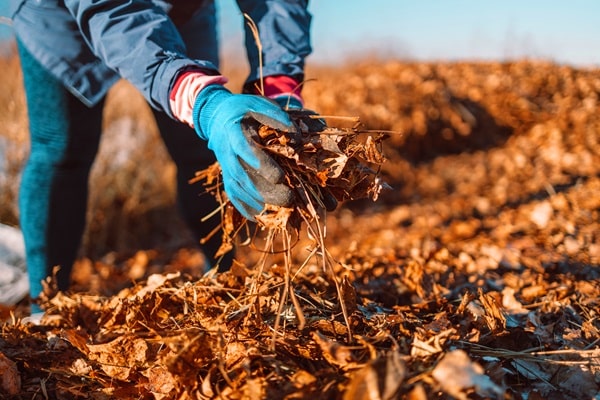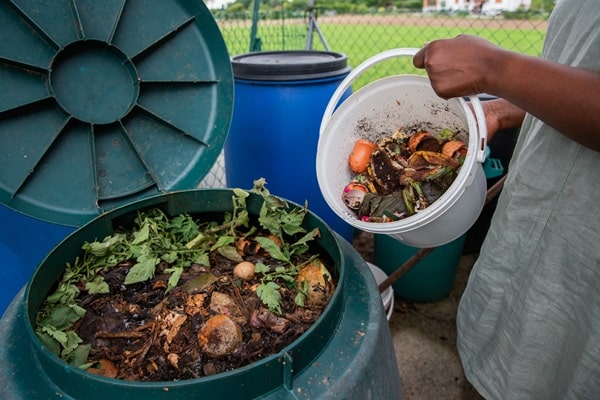Every year, gardens are often blanketed with leaves, commonly raked up and discarded, overlooking their potential value. This post delves into the innovative ways gardeners can utilize fallen leaves to enhance their garden’s health and aesthetics. From mulching to crafts, leaves are more than mere debris—they are a treasure trove of benefits waiting to be tapped. By integrating leaves in your garden practices, you can enrich your soil, conserve moisture, and even protect your plants from the cold. Discover seven unique uses for leaves that promote a more sustainable and vibrant garden.
Contents
Mulch for Plant Beds
Leaves, when used as mulch, naturally suppress weeds that compete with your garden plants for nutrients and light. Simply shred your fallen leaves with a mower or a shredder to prevent them from matting and to facilitate a quicker decomposition. Spread the shredded leaves around your plants and over your beds to create a protective layer that also keeps the soil moist and cool. This layer gradually breaks down, adding organic matter back into the soil, which improves its fertility and structure over time. The natural cycle of leaf decomposition means that your garden will be fed continuously, reducing the need for synthetic fertilizers.
Shredded leaf mulch also offers a habitat for beneficial insects that contribute to the health of your garden. These insects aid in breaking down organic material, further enriching the soil, and they also help control pest populations. Using leaves as mulch not only recycles garden waste but also leverages the ecological processes that maintain healthy plant life. Moreover, the aesthetic appeal of a leaf-mulched bed can be quite striking, particularly with colorful autumn leaves. With this approach, gardeners can minimize waste while maximizing the health and beauty of their plant beds.
Soil Amendment
Leaf mold, an excellent soil amendment, is created by decomposing leaves over time, producing a rich, crumbly, and nutrient-packed material. Start by collecting fallen leaves into a pile or a bin, where they should be kept moist and occasionally turned for aeration. This simple process transforms your leaves into a fantastic amendment that can significantly improve water retention and soil structure. Leaf mold is particularly useful in sandy soils that struggle to hold moisture or in clay soils that require better aeration.
Incorporating leaf mold into your garden enhances root development and plant health due to its ability to retain moisture near plant roots where it is most needed. This amendment does not deliver nutrients quickly; instead, it improves the soil’s ability to support a thriving plant ecosystem. By adding leaf mold regularly to your garden, you’re investing in the long-term health of your soil, ensuring it remains fertile and productive. Furthermore, the use of leaf mold reduces the reliance on chemical soil treatments, aligning your gardening practice more closely with natural ecological processes.
Protective Winter Insulation
Using leaves to insulate garden plants during winter can protect them from freezing temperatures and desiccating winds. Gather dry leaves and loosely pile them around the base of perennial plants, shrubs, and young trees. This layer of insulation keeps the soil temperature more consistent, preventing the frequent freezing and thawing cycles that can damage root systems. Ensure that the leaves are not packed too tightly, as adequate air circulation is necessary to prevent rot and mold growth.
The insulating properties of leaves are particularly beneficial for sensitive plants and bulbs that are not fully hardy in colder climates. By creating a natural buffer against the cold, you can help ensure that these plants emerge healthy and vibrant in the spring. This method is a cost-effective and environmentally friendly alternative to buying commercial plant covers or synthetic insulating materials. As the weather warms, simply remove the leaves and compost them, completing their cycle of use in your garden.
Habitat for Wildlife
Leaves are not only useful for the soil and plants but also provide essential habitats for garden wildlife. By leaving some leaf litter in your garden, you create a nurturing environment for insects, amphibians, and small mammals. These creatures play crucial roles in the garden ecosystem, from pollination to pest control. A layer of leaves mimics the natural floor of a forest, offering shelter and food for a variety of wildlife throughout the winter months.
Furthermore, strategic placement of leaf piles can enhance biodiversity in your garden by attracting different species that may not typically visit. For instance, hedgehogs, toads, and many beneficial insects are drawn to the shelter and humidity provided by leaf litter. Maintaining these miniature ecosystems within your garden supports natural pest management and contributes to a more balanced and resilient garden environment. Engaging in this practice highlights the interconnectedness of nature and the role of gardeners in fostering it.
Lawn Health Booster
Leaves can significantly enhance the health of your lawn when used as a natural soil amendment. By shredding leaves and spreading them thinly across the grass, you create a nutrient-rich layer that decomposes over time, feeding the lawn. This method is particularly effective with a mulching mower, which cuts the leaves into fine pieces that settle between grass blades, breaking down faster and integrating seamlessly with the soil. This process recycles nutrients and promotes healthier, denser grass growth and a more resilient lawn ecosystem.
The natural decomposition of leaves on your lawn releases essential nutrients, such as nitrogen, phosphorus, and potassium, which are vital for healthy grass development. This slow-release fertilization helps maintain a lush, green lawn without the need for chemical fertilizers. Moreover, the leaf coverage can help prevent thatch buildup and soil compaction, two common issues that can adversely affect lawn health. As the leaves decompose, they also improve the soil structure, enhancing its ability to absorb and retain moisture, which is particularly beneficial during dry periods.
Composting Ingredients
Incorporating leaves into your compost bin is a fantastic way to add carbon-rich material, which balances the nitrogen found in kitchen scraps and green garden waste. Leaves are considered “brown” compost material and are essential for creating a balanced, nutrient-rich compost. For optimal results, mix your leaves with “green” materials in a roughly 3:1 ratio (browns to greens), ensuring your compost pile has the right mix for effective decomposition. This layering technique helps accelerate the breakdown process and generates heat, which is crucial for converting waste into compost.
However, some leaves decompose at different rates and leaves like oak or beech may mat down and slow the process. To prevent this, it’s advisable to shred these leaves before adding them to the compost pile or periodically turn the pile to introduce more air and distribute moisture evenly. Regularly turning your compost pile and maintaining the right balance of materials will produce high-quality compost that can be used to enrich garden beds, nourish plants, and reduce household waste. This practice not only recycles leaves efficiently but also contributes to a more sustainable garden ecosystem.
Creative Decor and Crafts
Leaves offer a wealth of creative possibilities for garden decor and crafts that enhance the aesthetic appeal of your outdoor space. One popular project is creating leaf-imprinted stepping stones, where leaves are pressed into wet cement to leave detailed impressions. This not only recycles leaves in a creative way but also adds a personal touch to garden pathways. Additionally, leaves can be used to make natural wreaths for doors or garden fences, bringing a rustic charm to your home’s exterior.
Beyond decor, leaves can be utilized in practical crafts like making mulch for visual interest in garden beds or containers. Using different types and colors of leaves can add texture and color contrast, highlighting plants and flowers. Crafting with leaves not only recycles them in imaginative ways but also engages family members in garden activities, fostering a deeper connection with nature and enhancing the overall garden experience. These projects are simple yet effective, offering a way to beautifully integrate natural elements into your garden design.
Turn Over a New Leaf in Your Garden
Embracing the natural cycle of leaves in your garden promotes sustainability and nurtures the environment. By adopting innovative leaf uses, you enhance the beauty and health of your garden and support a rich ecosystem in your backyard. Let leaves transform your gardening practices, enrich your soil, protect your plants, and inspire creative projects, turning what was once considered waste into your garden’s seasonal asset.






